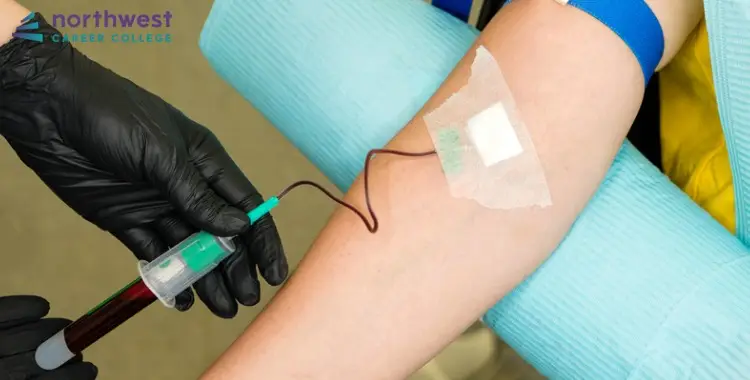How Medieval Physicians Used the Stars for Phlebotomy?
- Phlebotomy Technician
- March 11, 2024
- 3.1k views
- 3 min read

Medieval medicine and its practitioners had some odd ideas. For instance, their diagnostic techniques were largely limited to examining a patient’s urine, which they would then match to a chart, such as one now in the Bodleian Library and make medical diagnoses based on the comparative color.
One of the odder facets of medieval medicine was the practice of bloodletting based on the relative position of the stars. In the middle ages, the belief in astrology was almost universal and nearly everyone understood that the planets and stars under which a person is born would exert influence over a person’s health and personality.
Those stars were also much clearer in the night sky because of the comparative plack of light pollution.
Know More: What is Phlebotomy and why it’s necessary
Table of Contents
How Medieval Physicians Used the Stars for Phlebotomy?
Star-based Medicine
For most patients in the middle ages, phlebotomy was the go-to treatment and was prescribed for everything from headaches to corns on the understanding that bloodletting would help to balance the four humors that controlled the human body.
You’ll be happy to know that children, pregnant women and those over the age of 70 tended not to be bled.
In order to determine when and how much to bleed the patient, the physician would make sure that the age of the patient corresponded to the phase of the Moon and that their particular ailment had aligned itself to the section of the zodiac that it was connected to.
So, medieval physicians would scrutinize the night skies and consulted elaborate hand-drawn charts, similar to their urine color charts to decide when the best time to perform phlebotomy would be.
Knowing how to manipulate such a manuscript and read its complex diagrams would certainly have impressed the patient and establish a power and knowledge difference between doctor and patient. The manuscript would not only have aided the surgeon in his calculations but would also have served to demonstrate his knowledge and expertise, not unlike today’s white lab coat and stethoscope.
According to the tenets of phlebotomy, the figures of the zodiac governed particular body parts. That concept is visualized in “Zodiac man”, according to which, Aries governs the head, Gemini the two arms, Scorpio the sex, Aquarius the shins, Pisces the feet, and so forth.
To treat an ailment of the feet, a physician would consult the night sky with respect to the position of Pisces. Calculating the celestial positions and the relevant time, place, and manner to incise the patient’s vein would require interpreting various charts in the manuscript.
While this type of bloodletting may have been the basis of modern phlebotomy, you’ll be happy to know that modern phlebotomist no longer feels the need to check ancient manuscripts or the position of the stars when taking blood for blood tests.
Learning New And Important Skills
At Northwest Career College, we pride ourselves on providing one of the premier Phlebotomy Schools in Las Vegas. Our phlebotomy students have an 89% national exam pass rate and you can graduate in as little as three months. Our established seasoned instructors will take you through every aspect of Phlebotomy and Northwest offers day, afternoon and night classes to accommodate your busy Las Vegas work and family schedule. Call us today at (702) 403-1592 to speak to one of our admissions specialists about your new Phlebotomy career.



